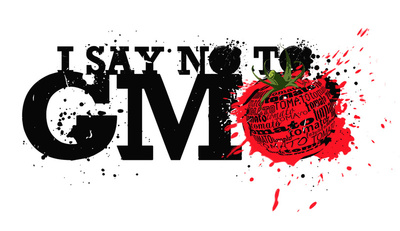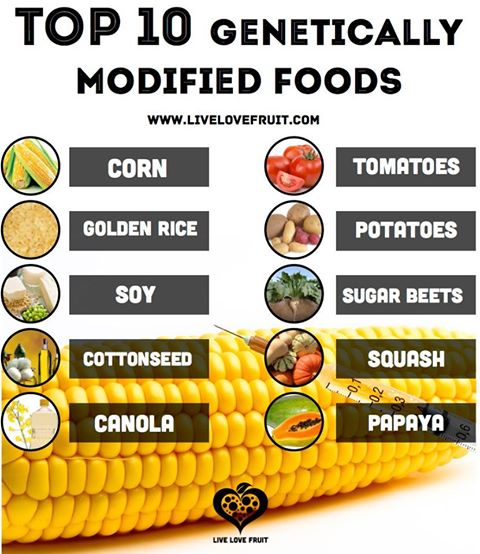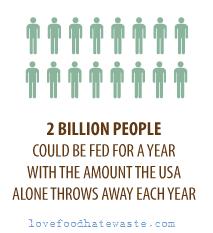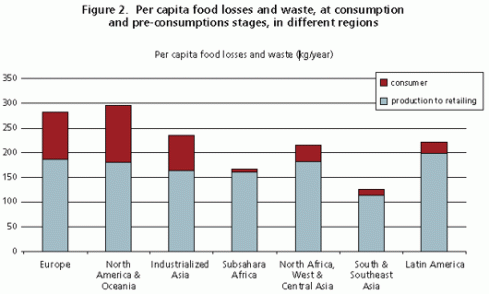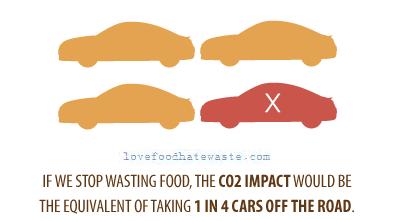The video below does a great job stating the issues of food production, distribution, and waste. (Their idea is cool too.. but I wouldn’t say it’s worth watching. Actually, they surprisingly neglect the issue of massive waste behind the scenes at restaurants….can’t do it all, right?)
Below are kitchen tips for reducing your food waste. The bulk of the ideas listed below are taken straight from this site. However, I have made many edits, including deleting entire ideas, adding to some, and rewording some. Additionally, there are other ideas incorporated in from my own head, as well as editor-in-chief of Food & Wine Magazine.
This is a great list– Print it and post it in your kitchen!
Using Up Vegetables
1. Don’t toss those trimmed ends from onions, carrots, celery, or peppers. Store them in your freezer, and once you have a good amount saved up, add them to a large pot with a few cups of water and make homemade vegetable broth. This is also a great use for cabbage cores and corn cobs.
2. Before it goes bad, blanch it and toss it in the freezer. This works for peas, beans, corn, carrots, broccoli, brussels sprouts, cauliflower, and leafy greens like spinach and kale.
3. Roasted root vegetable leftovers can be turned into an easy, simple soup the next day. Add the veggies to a blender, along with enough broth or water to thin them enough to blend. Heat and enjoy.
4. If you’re preparing squash, don’t toss the seeds. Rinse and roast them in the oven, just like you would with pumpkin seeds. The taste is pretty much the same.
5. Leftover mashed potatoes from dinner? Make them into patty shapes the next morning and cook them in butter for a pretty good “mock hash brown.”
6. Swiss chard stems are great to just saute and enjoy. If that isn’t for you, chop the stems and use them in a casserole. Even better– this one you can use for kale or chard stems.
7. Use up tomatoes before they go bad by drying them in the oven. You can then store them in olive oil in the refrigerator (if you plan on using them within a week) or in the freezer.
8. Canning is always a good option. If you’re doing tomatoes, you can use a boiling water bath.
9. Too many zucchini? Make dark chocolate zucchini cake, zucchini bread or muffins. If you don’t want to eat the bread now, bake it and freeze it, then defrost when you’re ready to eat it.
10.Pickle it. Cucumbers are the first veggie most of us think of pickling, but in reality, just about any vegetable can be preserved through pickling.
11. Chop fibrous dark green tops of leeks, saute them with butter, then toss it in mac n’ cheese.
12. Julienne broccoli stalks to create a broccoli slaw.
Ideas for Cutting Down on Fruit Waste
13. Make smoothieswith fruit before it goes bad. Berries, bananas, and melons are great candidates for this use-up idea.
14. Make sangria from bruised fruits.
15. Jam is really easy to make, and will keep for up to a year if you process the jars in a hot water bath. If you don’t do the water processing part, you can keep the jam in the refrigerator for a month, which is a lot longer than the fruits would have lasted.
16. Dry your fruit and store it in the freezer or in airtight containers.
17. Make fruit leather.
18. Date pits can be roasted and pureed to be added to desserts.
19. Use up the fall bounty of apples by making applesauce or apple butter.
20. Don’t throw out those watermelon rinds! Pickled watermelon rind is a pretty tasty treat.
Putting Extra Grains to Good Use
21. Make croutons out of day-old bread.
22. Turn day-old bread or bread crusts into homemade bread crumbs. Add Parmesan cheese for an extra kick!
23. Save potato skins. After peeling, fry them in some oil, then bake with parmigiana in the oven.
24. All of those little broken pieces of pasta in the bottom of the box? Collect them and mix with rice and veggies for a simple side dish.
25. Add chopped bread to a soup. It will dissolve and thicken the soup.
26. A few tablespoons of leftover oatmeal isn’t enough for a meal, but it is great sprinkled on top of yogurt. Or– add it to your pancake mix for a heartier texture.
27. Made too many pancakes for breakfast? Put them in the freezer, then toss in the toaster for a fast, tasty weekday breakfast. Ditto waffles.
Make the Most of Meat
28. Don’t toss those chicken bones after you eat the chicken. Boil them to make chicken stock. Same goes for bones from beef and pork.
29. The fat you trim from beef can be melted down and turned into suet for backyard birds.
30. Turn leftover bits of cooked chicken into chicken salad for sandwiches the next day.
Use Dairy Before It Expires
31. If you’ve got a few chunks of different types of cheese sitting around after a party, make macaroni and cheese.
Herbs and How to Get the Most Out of Them
32. Chop herbs and add them to ice cube trays with just a little water. Drop whole cubes into the pan when a recipe calls for that type of herb.
33. You can also freeze herbs by placing them in plastic containers. Certain herbs, such as basil, will turn black, but the flavor will still be great.
34. Make pesto with extra basil or parsley.
35. Dry herbs by hanging them by their stems in a cool, dry location. Once they’re dry, remove them from the stems and store them in airtight containers.
Don’t Waste a Drop
36. Leftover coffee in the carafe? Freeze it in ice cube trays. Use the cubes for iced coffee or to cool down too-hot coffee without diluting it. You can do the same with leftover tea.
37. If there’s a splash or two of wine left in the bottle, use it to de-glaze pans to add flavor to whatever you’re cooking.
38. If you have pickle juice left in a jar, don’t pour it down the drain. Use it to make a fresh batch of refrigerator pickles, or add it to salad dressings (or dirty martinis).
39. You can also freeze broth or stock in ice cube trays, and use a cube or two whenever you make a pan sauce or gravy.
40. If there’s just a bit of honey left in the bottom of the jar, add a squeeze or two of lemon juice and swish it around. The lemon juice will loosen up the honey, and you have the perfect addition to a cup of tea.
Finally….
If there is no way of using scraps, compost it! All raw vegetable scraps can break down into compost, to then grow more food 🙂
